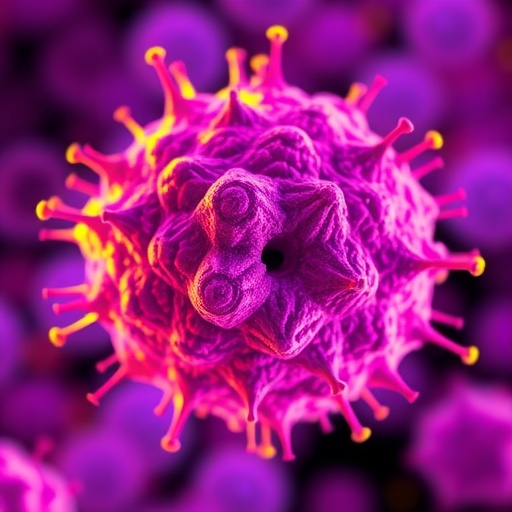In a groundbreaking 12-year multicenter study published in Cancer Biology & Medicine, researchers have unveiled a comprehensive approach to managing one of the most aggressive and lethal forms of liver cancer recurrence: postoperative hyper-progression recurrence (HPR) in hepatocellular carcinoma (HCC). Analyzing data from over 3,000 patients across multiple hospitals, the investigation bridges clinical and molecular sciences, ushering in new predictive tools and therapeutic strategies for a condition that has long defied effective intervention.
Hepatocellular carcinoma ranks among the deadliest cancers globally, claiming millions of lives annually. While advances in hepatectomy have markedly lowered procedural risks, the shadow of tumor recurrence looms large. Particularly alarming is hyper-progression recurrence, a devastating pattern characterized by rapid tumor multiplication within months after surgery, resulting in aggressive nodules that overwhelm hepatic function. Conventional clinical staging systems have fallen short in forecasting this dire trajectory, leaving clinicians with scant guidance on postoperative management.
By strategically integrating epidemiological data with molecular pathology, the research team from Guangxi Medical University Cancer Hospital and their international collaborators devised highly accurate predictive models to stratify patients by HPR risk both before and after surgery. These models incorporate an array of nine independent clinical predictors, including patient age, alpha-fetoprotein levels, tumor size and multiplicity, vascular and microvascular invasion, proliferative indices such as Ki67, tumor capsule integrity, and postoperative complications. Strikingly, a preoperative nomogram using six of these variables demonstrated exceptional discriminatory power, yielding an area under the curve exceeding 94%, a benchmark rarely reached in oncology risk prediction.
Beyond purely clinical parameters, the researchers leveraged transcriptomic profiling to unravel the molecular underpinnings that define HPR tumors’ aggressive biology. Their analyses revealed nearly 5,000 differentially expressed genes, spotlighting hyperactivation of cell cycle pathways and immune exhaustion signatures. Most notably, the co-expression of oncogenes MYCN and HMGA2 emerged as a distinct molecular hallmark correlated with the rapid progression and poor prognosis of HPR cases. This co-expression not only deepens understanding of HCC biology but also exposes a vulnerable target for future personalized therapies in HCC treatment.
The study’s design incorporated conditional inference trees alongside nomograms, enabling a multilevel risk stratification. Patients categorized as very high risk postoperatively benefited significantly from adjuvant therapies such as transcatheter arterial chemoembolization (TACE) and hepatic artery infusion chemotherapy (HAIC), which showed improved survival outcomes compared to those receiving standard supportive care alone. This finding challenges the traditional nihilism regarding postoperative adjuvant options in patients at high risk for recurrence.
Importantly, this comprehensive prognostic framework carries immediate clinical implications. Preoperative models empower physicians to discern which patients are unlikely to benefit from surgery, preventing futile interventions and sparing patients from unnecessary surgical morbidity. Concurrently, postoperative classifiers schedule personalized adjuvant therapies that can delay or mitigate recurrence, transforming HPR from a near-certain death sentence into a potentially manageable clinical state.
The aggressive timeline of HPR was quantified for the first time with rigorous precision; 16.2% of the cohort experienced recurrence within four months post-hepatectomy—a window too narrow for most conventional therapeutic salvage. The rapidity of this recurrence imposes urgency in early intervention, underscoring the necessity of predictive capability before symptoms manifest or imaging detects new lesions.
This integrative study elevates MYCN and HMGA2 from mere biomarkers to putative drivers of oncogenic hyper-progression. Both genes have documented roles in other malignancies, typically associated with transcriptional regulation and chromatin remodeling, fostering unchecked proliferation and metastatic potential. The discovery of their synergistic expression in HPR tumors suggests a novel pathogenic axis amenable to targeted molecular inhibition—a promising frontier for drug development.
Dr. Lunan Qi, senior author and lead investigator, highlighted the translational significance of these findings. By uniting clinical prognostication with biological mechanistic insights, the research project propels liver cancer management towards a new paradigm of precision oncology. The integrated use of predictive nomograms and molecular signatures forms a dual scaffold for clinical decision-making, offering the potential to extend survival and preserve quality of life in a patient population previously considered untreatable beyond palliation.
The multi-institutional scale and extensive data sets of the study provide robustness rarely equaled in HCC research. Screening over 16,000 liver cancer patients before selecting the well-characterized cohort of 3,125 ensured diverse representation, enhancing the external validity of the models. Moreover, the comprehensive follow-up and systematic molecular analysis highlight the synergy possible between clinical epidemiology and cutting-edge genomics in unraveling complex cancer behaviors.
While the study primarily emphasizes surgical and adjuvant therapy optimization, its implications ripple into early detection, molecular diagnostics, and drug discovery. The identification of MYCN/HMGA2 co-expression as a discriminator of aggressive recurrence may guide the future design of targeted inhibitors or immune-modulating agents tailored to this high-risk subgroup, thereby adding new weapons to the limited arsenal against advanced HCC.
As liver cancer continues to exact a tremendous global toll, this pioneering research demonstrates how large-scale, multidisciplinary collaboration can yield actionable knowledge. By transforming a previously inscrutable recurrence pattern into a clinically actionable entity, the study marks a critical leap forward in liver cancer therapeutics and prognostication.
This investigation sets a benchmark for future oncology studies integrating clinical risk modeling with molecular characterization. The promise of nomogram and inference tree algorithms lies in their potential for broad application beyond HCC, serving as templates for other malignancies manifesting heterogeneous recurrence phenotypes and molecular complexity.
Taken together, the work from Guangxi Medical University Cancer Hospital and partners embodies the future of personalized hepatocellular carcinoma care—melding rigorous data science, advanced genomics, and nuanced clinical acumen. With these tools newly at hand, patients facing the agonizing prospect of hyper-progression recurrence may finally have reason for hope, as therapeutic precision replaces therapeutic guesswork.
Article Title: Comprehensive strategies for management of postoperative hyper-progression recurrence (HPR) of hepatocellular carcinoma: a 12-year large sample multi-center study
News Publication Date: 15-Sep-2025
References:
DOI: 10.20892/j.issn.2095-3941.2024.0514
Image Credits: Cancer Biology & Medicine
Keywords: Hepatocellular carcinoma, hyper-progression recurrence, liver cancer, predictive nomogram, MYCN/HMGA2, adjuvant therapy, transcatheter arterial chemoembolization, hepatic artery infusion chemotherapy, tumor recurrence, oncogenes, precision oncology, molecular markers
Tags: advances in hepatectomy techniquescancer biology and medicine researchclinical predictors for liver cancerepidemiological data in cancer studiesliver cancer managementmolecular markers in hepatocellular carcinomamultidisciplinary approach in oncologypostoperative hyper-progression recurrencepredictive models for cancer recurrencerisk stratification in liver cancertherapeutic strategies for HCC





